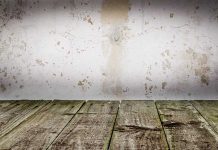You must have heard about flying termites. However, you might be oblivious to the threats they pose to the walls of your house. The question is how to get rid of termites in walls of Homes and offices. They are silent destroyers that hide and feed on the walls without any apparent damage for a long period. All they need is moisture and an optimum temperature. They take shelter in your basement or some other place.
If you think your building is also victimized by termites, there are a few things you must know about termites first. Plus, giving this article a thorough read will also help you get rid of termites in no time.
What are Termites?
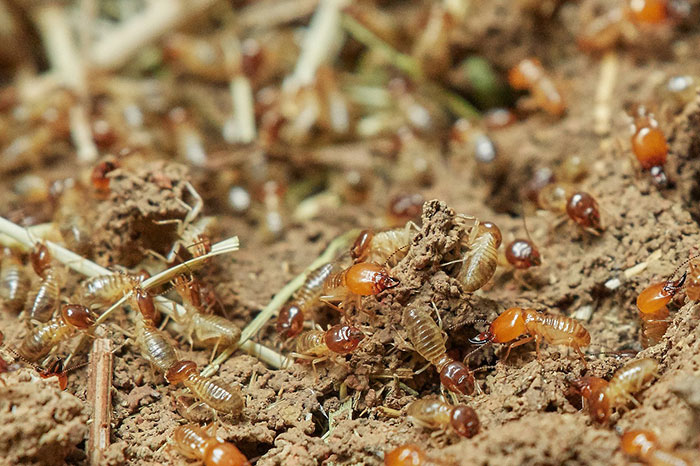
Termites are pests that can be classified into five different types. They feed on cellulose, which means almost all buildings are bound to face them anytime sooner or later. Termites can show up in any plant or wood material without giving indications of their existence. The termite clearly intends to tear away intense cellulose materials. However, they would not resist infesting a wall, shelf, or even a book. So at first, you need to be familiar with the types of termites to know how to get rid of termites in walls.
Explaining Different Types of Termites
Below are the types of termites that are more commonly found in homes.
- Conehead termites
- Dampwood termites
- Drywood termites
- Formosan termites
- Underground termites
Regardless of your house’s location, any of these types of termites might be present in your home or its milieu. Drywood termites will, in general, be the most common as they live and devour wood from inside the house. Underground termites construct a broad passage that enables termites to enter your home from underneath.
Termites pose a constant and potential risk to your home’s infrastructure. That is why it has become pertinent to take precautions and constitute a control plan in case the damage caused by them starts to appear.
What do Termites look like?

Though most termites look similar, they have different characteristics. So, you can differentiate them based on their size, body, and color. The length of the termites varies between 0.25 to 0.5 inches.
Termites also differ in color. Some look white while the others reflect light brown color. However, even with termites’ striking characteristics, people often take them for flying ants. These creatures may jeopardize the damp places in a home, specifically walls. Therefore, there is a need to identify and report the termites’ existence so that immediate action can be taken against them.
How do you tell if you have termites?
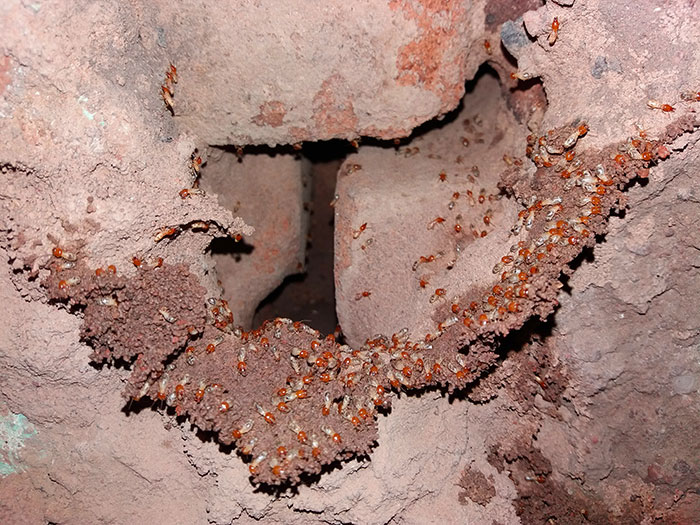
As said earlier that people often confuse flying ants for termites, so therefore, identifying the termites is the first step in the process of destroying them. No action can be taken unless they have been verified in a large amount inside a building. Below are a few options to verify the existence of termites and homeowners can exercise these to be sure of how to get rid of termites in walls.
Examining the apparent damage to a wall or wood
Since the termites feed on the wall and cellulose is present in wood, the damage is a must thing. You can spot the apparent damage in the form of sagging floors, ceilings, or affected wooden surfaces. So, if the infrastructure in your house building manifests any of these damages, the existence of termites is definite. Now, you need to take immediate action.
Contacting professionals
Even after examining your walls and wooden surfaces on your own, you are not sure about termites. You can reach out to the professionals. The professional team is likely to use efficient techniques for detection, treatment, and control of the termites.
Inspecting Mud tubes
Termites construct cover tubes (mud tubes) out of the soil, unlike soil mites, and wood particles joined together by their saliva. Their mud tubes permit them to move between their habitats and destined feeding sites without getting dehydrated. The tubes are brown with a width equal to a pencil. So, they can be easily detected on slabs, foundation walls, attics, etc. They may run along level surfaces or hang down vertically.
Knowing whether the termites that built the tubes are still around or not, you need to scrape off the mud tube’s piece. If the disturbances you trigger are fixed or leveled quickly, this indicates a high chance of active termites in the building.
Termite Larvae

Ever been exposed to termite larvae? It’s quite difficult to recall because people often confuse termite larvae with other insects’ larvae, especially flies. The larvae of the termite are as small as its eggs with a soft white outer covering. Similar to adult termites, they also feed on cellulose.
However, the adults break down the large cellulose chains into smaller ones to digest the larvae. Moreover, the larvae do not directly feed on walls and wooden surfaces; instead, the mature termites feeding on the walls and other surfaces nourish them. Thus, you can conclude that larvae bring about indirect damage to the infrastructure of the building. So taking care of this larvae is the initial step of how to get rid of termites in walls.
How do Termites Spread?
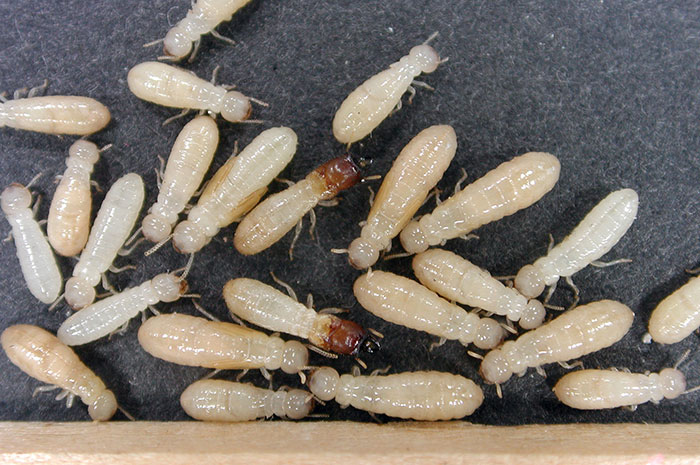
The termites may go unnoticed in their early stages. Therefore, their population can grow rapidly if they remain undetected for long periods. The female termite can lay as many as 30 thousand eggs in one day, thereby reproducing very quickly. Moreover, they also continue to multiply while traveling through mud tubes or wall cracks. What enhances their growth are moist places in your home because termites look for food in places like wooden floors, doors, walls, etc.
To be exact, they feed on cellulose present in such sites. In addition to their search for food, termites also spread through mating. In a bid to find a swarming winged male, a female winged termite moves out of its active colony and mate with the male. After the mating activity is completed, female termite looks for a suitable place for laying eggs. Thus, it becomes the primary source of spreading termite in your area.
A Methodology about How to Get Rid of Termites in Walls?
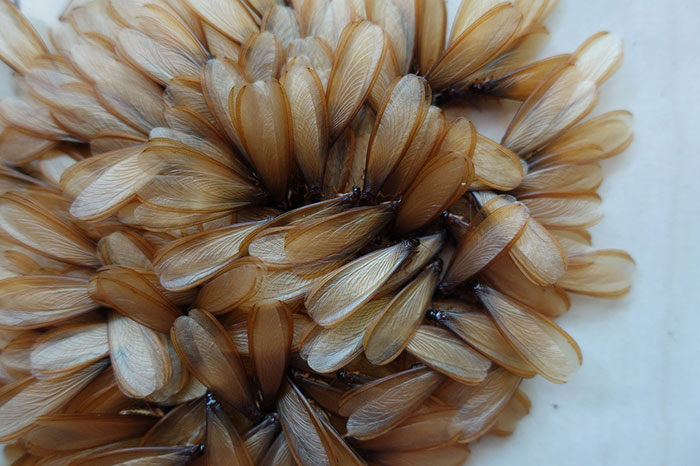
Dealing with termites can be tricky sometimes. Therefore, you may need them on multiple fronts. However, the process starts with identifying the termites and pinpointing the exact location and source from where they have emerged. Once you are sure about their existence and the places they take nourishment from, you are already done with half of the job. Here is a step by step guide for you to tackle termite control and getting rid of it permanently.
Monitoring Station:
Monitoring stations are there to detect infestations and active colonies of the termites. These are incorporated within the soil to investigate signs of infestation.
Bait Station:
Once the areas with infestations are there, the monitoring stations may replace bait stations. The bait station works as a trap for millions of termites. The inactive bait is instilled into the station. It is carried by the worker termites and fed to the remaining ones. Thus, it kills a large number of termites in a matter of no time.
Conventional Fluids:
Though bait stations are an effective way of treating termite colonies, they may not yield the desired results for severely affected areas due to termites’ dense populations. Therefore, to wipe out termites from such high-population zones, using liquid insecticides can be conducive.
Termite control liquids help eradicate termites that settle and grow deep into the walls and other surfaces. Control fluids not only help in eliminating the existing termite colonies but also ensure that the future growth of termites is prevented. It can be directly applied to the surface suspected with an infestation or injected into the surface to closely target termite populations.
Gas Fumigation:
Gas fumigation is effective in treating termites with established colonies inside the infrastructure. The gas fumigation disturbs the termite population’s metabolism. It, therefore, affects their capacity to grow and reproduce.
Nematodes:
Nematodes are unique parasites that feed on termites. You can contact laboratories or online stores selling nematodes.
Termite killer spray:
Termite killer spray is the most typical method of dealing with termites.
The anti-termite rush comes in spray bottles. Most people resort to termite killer sprays because it may not involve any technicalities. All users need is to spray the chemical enclosed in the spray bottle over wall voids, outdoor locations, and other suspected places.
Precautionary measures
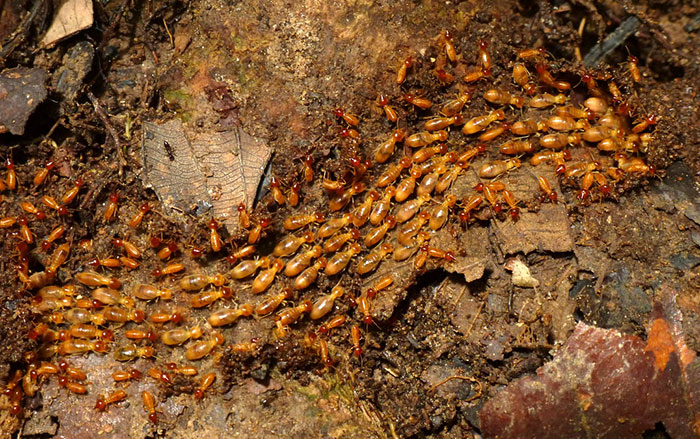
Fixing Leakages:
Moisture plays a pivotal role in the growth of termites. So, all you need is to call a plumber and fix leakages without anymore delays. It, thus, reduces the chances of termite infestation. In addition to moisture, wood contacting the ground also lures termites. So, it removes any wooden surface that is in direct contact with the ground and prevents termite infestation in one way or another. However, where wood contact with the ground is unavoidable, you should use pre-treated wood. You must inject it with special fluids to prevent wood decay.
Maintaining a proper drainage system:
You also need to ensure that your drainage system is operational. In this way, the termites may not find a favorable environment around your house. Clogged gutters and leakages in drainage bring about water in the building’s foundations. These are no less than the safe haven for termites to reside, grow, and reproduce. Therefore, install the best gutter guards and keep your drainage system and toilets clean. This will leave no grounds for termites to settle in your place of living.
Proper Ventilation:
Proper air ventilation will prevent a piling up of moisture in the building. Thus, the termites are not likely to choose such a building that is dry and has adequate ventilation. Proper ventilation is more important for places exposed to moisture and dampness, such as washrooms. So, installing ceiling fans and exhausts is likely to keep the walls dry. Consequently, termites will not find water, which they usually crave before setting up a colony.
Setting up conventional traps:
If you have extra cardboard in your storeroom, you can set up a trap for the termites. You need to make the cardboard wet and place it in proximity where you suspect a termite population. Once the termites start to feed on the cellulose present in the cardboard wood, you can either burn or dispose of the cardboard away from the house. However, this method is not effective in dealing with dense populations of termites. Therefore, you should call termite control experts for a professional and permanent solution.
Removing stagnant water:
Cellulose is not the only attraction for termites. What offers the perfect mix to the termites are dampness and cellulose. If you have any pools or depressions filled with standing water, you have already arranged a buffet that termites crave for. Hence, you need to immediately vacate all such pools with stagnant water to prevent termites from coming to your place.
Exposing walls and other surfaces to the sun:
Indeed, the sun will do magic for you if you are really looking for how to get rid of termites in walls. If you believe that a termite colony has not grown deep and is in its initial phase, you can expose surfaces to the sun to deal with termites. In this way, you may kill all the termites existing on the body easily.
Conclusion
In a nutshell, termites pose a potential risk for the interior of your house, specifically walls and wooden surfaces. Moreover, it can prove devastating if you overlook the growing termite population continuously. It will be a matter of no time for a single colony of termites to bring all you have in your building to decay.
Already knowing about how to to get rid of termites in walls, dealing with the termites before they inflict massive damage should be the priority of home-owners. First and foremost, all precautionary measures should be there strictly. These must inhibit the favorable conditions for termites. You should set up standards, such as screens, sand, and eliminating termite attractions. It is also critical to ensure a home’s drainage system performs satisfactorily.
Any water spills from the pipes can easily nurture a termite colony. However, if termite infestations appear with all precautionary measures taken, contacting a team of professionals becomes a dire need. This is likely to implement a mix of modern and conventional techniques to help you get rid of the scourge of termites.
Images from: Wikimedia Commons and Flicker





